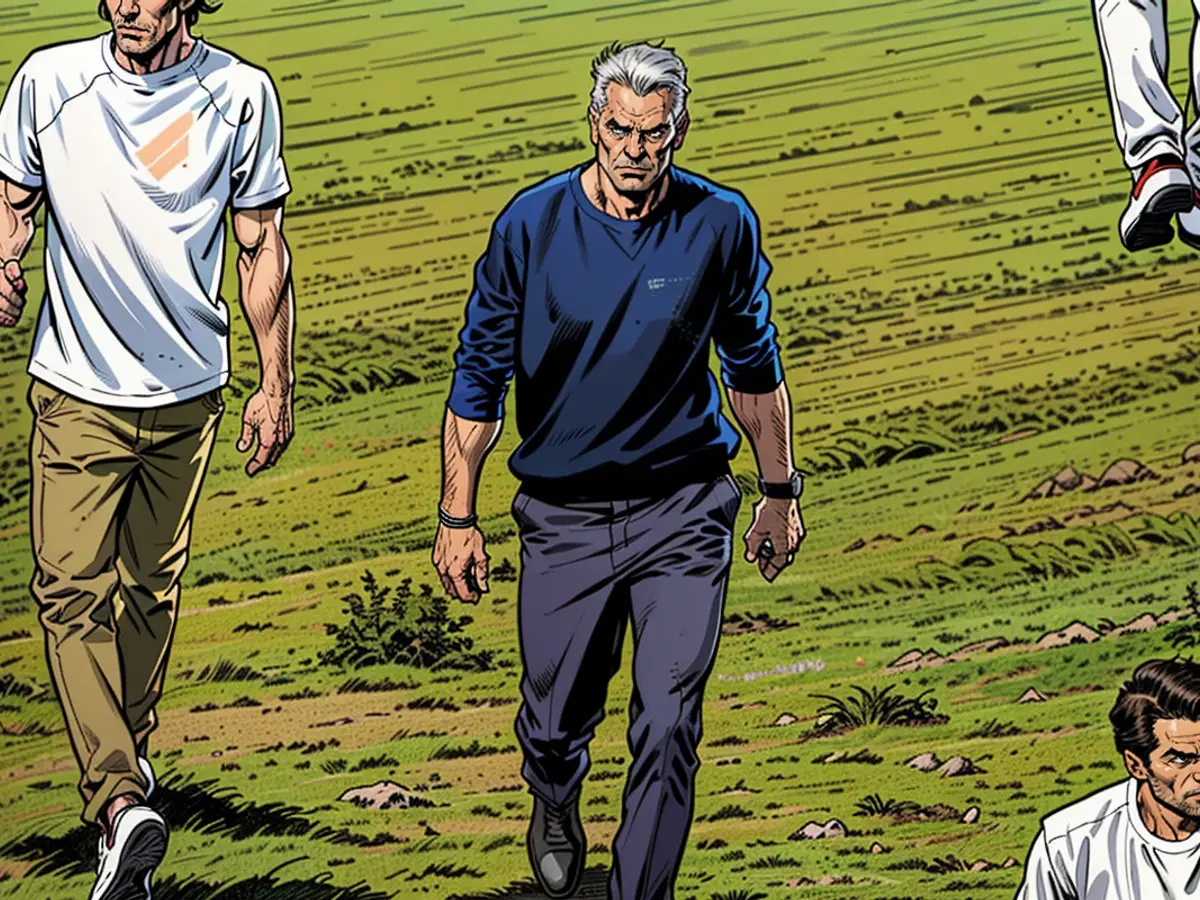European Football Championship - Offside? Hand? Video evidence debate after Germany win
Thomas Delaney's toe saved Germany from going behind. Joachim Andersen's minimal touch of the ball with his hand led to the decisive penalty goal.
The video evidence and new technology had a significant impact on the 2:0 round of 16 victory for the German team against Denmark. This didn't sit well with everyone - the Danish coach Kasper Hjulmand found the decision "laughable". Here are the key questions.
What are we talking about?
Denmark's Andersen scored in the 48th minute after chaos in the German defense - the alleged leading goal didn't count. With the help of the semi-automatic offside line, the referee team, led by the British Michael Oliver, determined that Delaney's toe was in an offside position at the moment of contact. No goal. A few minutes later, Andersen became the tragic figure: A cross from David Raum brushed against his hand from a short distance, according to video evidence with impact graphics of the ball contact, Oliver called for a penalty. Kai Havertz converted confidently. Instead of 0:1 for Germany, it was 1:0 within minutes.
What do the coaches say?
"I've had enough of this ridiculous handball rule," said Denmark's national coach Hjulmand. "We can't expect our defenders to run with their hands on their backs. He was just running normally." German coach Julian Nagelsmann commented on the scene: "I can understand why the Danes are upset. But the rule is the rule. The arm was spread."
Regarding the offside situation, Hjulmand kept showing a picture of the scene on his phone. "I was told that the statistics don't matter. We shouldn't use the video referee for this. It's about a centimeter."
And what do the experts say?
German top referee Felix Brych said on Sport1 that Oliver had made the right call in the end, "even if it's bitter for Denmark." The game, which was also interrupted due to heavy rain, put "unbelievable" demands on the referees. Referee colleague Pascal Ittrich referred to the established handball rules on MagentaTV. "We have to try, as best we can, to evaluate similar situations equally," argued Ittrich, but he also acknowledged: "I can understand from a player's perspective that this is a problem."
How does the new technology with the chip in the ball work?
The graphic, which resembles an electrocardiogram (EKG) for measuring heartbeats, shows with waves when the ball is touched. In conjunction with the video images, the referees can identify handballs more clearly. However, the technology is not without controversy. "We could just get rid of this wave display that's shown," said former national player Michael Ballack on MagentaTV. "We should still judge based on common sense."
How does UEFA view the VAR usage in general?
UEFA referee chief Roberto Rosetti was very pleased with the VAR performance after the group stage. In the 36 group stage matches, there were 20 interventions by the video assistant, in 12 cases the main referee re-examined the scene. The technology with the chip in the ball worked "very well." If the video images did not provide a definitive conclusion, "we can rely on a graphic that shows the contact of the ball," said the Italian.
- The controversial decision in the round of sixteen match between Germany and Denmark was heavily influenced by video evidence and new technology.
- The European Championship game saw a 2:0 victory for Germany, thanks in part to the application of VAR and the semi-automatic offside line.
- Amidst the controversy, Denmark's coach, Kasper Hjulmand, found the decision "laughable," particularly regarding Joachim Andersen's penalty call.
- Germany's Thomas Delaney's toe was determined to be in an offside position by the referee team, led by Michael Oliver, using video evidence, preventing Denmark from scoring in the 48th minute.
- A few minutes later, Andersen became the subject of another VAR review, this time for handball, leading to a penalty kick for Germany.
- Kai Havertz confidently converted the penalty, putting Germany up 1:0 instead of Denmark's 0:1 lead.
- German coach Julian Nagelsmann acknowledged the Danish team's frustration but defended the referee's call, stating, "The arm was spread."
- Felix Brych, a German top referee, supported the referee team's decision, despite the bittersweet outcome for Denmark.
- The use of VAR in the match was not without controversy, with former national player Michael Ballack suggesting that the wave display should be removed.
- UEFA referee chief Roberto Rosetti praised the VAR performance during the group stage, acknowledging that the technology with the chip in the ball worked well.
- In 36 group stage matches, there were 20 VAR interventions, with 12 scenes re-examined by the main referee.
- Ittrich, a referee colleague, argued that the established handball rules should be used to evaluate similar situations equally, while acknowledging the player's perspective on the matter.








